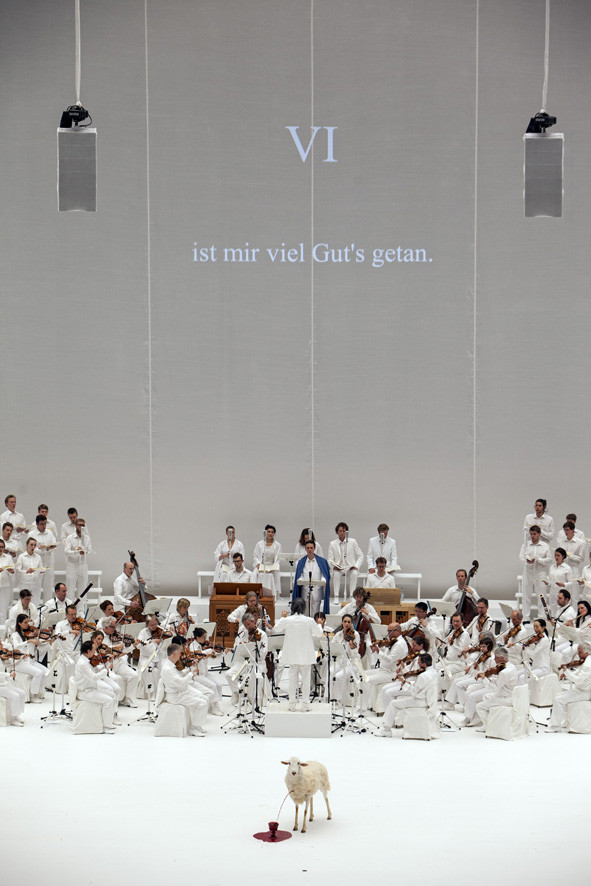La Passione

Johann Sebastian Bach
Conductor: Kent Nagano
Concept, director, set, costume and light design: Romeo Castellucci
Artistic collaboration: Silvia Costa
Set design collaboration: Maroussia Vaes
Dramaturgy: Piersandra Di Matteo
Evangelist: Ian Bostridge
Sopran 1: Hayoung Lee
Sopran 2: Christina Gansch
Alt: Dorottya Láng
Tenor: Bernard Richter
Jesus / bass: Philippe Sly
Orchester: Philharmonisches Staatsorchester Hamburg
A production of Hamburg State Opera
in cooperation with Deichtorhallen Hamburg
in the course of the International Musikfest Hamburg 2016
Supported by Commerzbank Hamburg
Photo: Bernd Uhlig
The art of Romeo Castellucci is traversed by the tension involved in creating images that cut through the knowledge of the unconscious, piercing the heart of today’s negligence of the gaze. For him, theatre is “the opportunity to think, to think of seeing, to see sight; to become aware, that is, of the profound meaning of being a spectator today, facing problems created deliberately for him”. […]
In staging Bach’s Matthäus-Passion, Romeo Castellucci avoids any and all temptation towards spectacle, searching for a new sense of revelation. Doing away with the logic of illustration and figurativism as no more than stereotypical consolations for the spectator, a number of situations will allow the latter to find a posture when faced with the words of the Gospel.
As pure objects of contemplation, a series of elements will appear one after another, without any technical expedient. They will be presented as “stones”, capable of condensing an attitude of deep listening. They could be considered as “scandalous objects”, understood as scandalon in the Greek sense, as when someone walking down the street encounters a rock, an obstacle, and loses their balance for a moment; as something that forces the spectator to change his/her route, a sort of door left open that gives access to another room.
Each of them will be treated as a “problem”, capable of touching, creating a commotion, a cortical commotion that is the opposite of sentimentalism. When these images are intermingled with the deep essence of Bach’s composition, one can decide to open oneself up to listening, to remove one’s gaze, to linger, or even, perhaps, to experience an opening onto the sense of the human suffering.